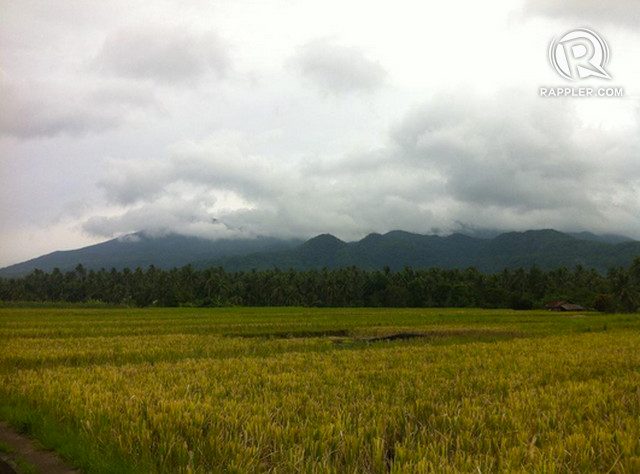SUMMARY
This is AI generated summarization, which may have errors. For context, always refer to the full article.

SORSOGON CITY, Philippines (UPDATED) – The province of Sorsogon is preparing for a major Bulusan Volcano eruption, a probability bolstered by the volcano’s eruption pattern in recent years, said its disaster risk management chief.
Raden Dimaano, head of Sorsogon’s Provincial Disaster Risk Reduction and Management Office said Bulusan is “due for an eruption.”

FAST FACTS: Mt Bulusan, the PH’s 4th most active volcano
Did you know that sudden eruptions are common for this volcano?
“Kung titingnan mo yung frequency niya, yung previous na phreatic explosion, almost hindi umaabot ng 3 years. Ngayon, medyo overdue na kaya talagang inaabangan namin yan,” he told Rappler on Saturday, May 9.
(If you look at the frequency of its previous phreatic explosions, they do not reach 3 years [without an eruption]. Now, it’s overdue so we are really preparing ourselves.)
He explained that the last major eruption happened in 2011. Before that, there was one in 2009 and, previously, in 2007.
“That span of time seems to be when it gets clogged and then it suddenly blows up,” he said in a mix of English and Filipino.
This was verified by Louie Velasco, Science Research Analyst for the Philippine Institute of Volcanology and Seismology (Phivolcs) based in Sorsogon City.
“For the past few years, that’s what has been happening in Bulusan. There are small ash explosions or phreatic eruptuns followed by a big one. That’s a possibiity. In 2011, that happened,” he told Rappler.
Phivolcs has described Bulusan as characterized by “sporadic phreatic eruptions” during its restive periods. Alert Level 1 was raised over it following two eruptions in one week.
The two eruptions lasted only 3.5 minutes and 5 minutes. Bigger eruptions, like the one that occured in 2007, lasted for 20 minutes, thus spewing more ash and affecting more towns.
Phreatic eruptions are steam-driven explosions that occur when water makes contact with hot rock inside the volcano, producing steam that escapes violently through the crater.
This type of eruption comes without warning and is not easily detected. Thus, phreatic eruptions can occur even when no alert level is hoisted over the volcano.
Sorsogon waits for the worst-case scenario as Typhoon Dodong approached, prompting weather officials to raise Public Storm Warning Signal No. 1 over the province.
Expected rainfall from the storm prompted Sorsogon officials to preemptively evacuate residents of Cogon in Irosin town, threatened by lahar that can be driven down Bulusan’s slopes by the rain.
Typhoon Dodong’s winds
As of Saturday morning, there were 300 evacuees in Gallanosa National High School in Salvacion village, Bulusan – an evacuation center two kilometers away from the 4-kilometer-radius Permanent Danger Zone around the volcano.
These comprise all the residents who live in the part of Cogon town that lies within the PDZ.
Though the latest Dodong forecasts show the typhoon’s eye as avoiding Sorsogon, Dimaano said they would not let evacuees go home just yet.
“We’re going to wait for the development of Dodong. At the same time, we will look at the advisory of Phivolcs,” he said.
They fear Dodong’s course will change, bringing it closer to the province. Dodong’s track will also determine the direction of the wind which could blow newly-spewed ash on the volcano to surrounding villages.
“When Dodong passes by, maybe the wind direction will change. Then ash fall might affect more towns like Juban and Casiguran. Our assessment depends on the wind,” said Dimaano.
Another worry is that officials are not yet sure how much ash and sediments have accumulated by the crater following Bulusan’s most recent eruption last Wednesday.
Phivolcs and Dimaano’s office have requested for an aerial inspection from the Air Force in order to check this. Knowing where the concentration of ash is greatest will help them identify the villages most in danger of ashfall, depending on changing wind direction.
Ready for scenarios
If Bulusan gets more restive and Phivolcs raises the alert level to 2, the province will order the evacuation of residents living within 9 kilometers of the volcano.
This would mean more than 98,200 individuals will have to be evacuated.
Currently, the needs of the 300 evacuees are being provided for by the local governments of Cogon village and Irosin town.
As of Saturday morning, 82 food packs were already distributed. Should the LGUs need assistance, the provincial government will step in. – Rappler.com
Add a comment
How does this make you feel?





There are no comments yet. Add your comment to start the conversation.